- Compact design and extensive automation clinched the investment decision
- Significantly improved print quality
- Additional production capacities
It was 45 years ago that LacherDruck in Memmingen converted a former ballroom restaurant into a printshop. There are still visible signs today – the parquet floor, stucco ceilings and an area which was no doubt once a stage for the dance bands. In the meantime, the only dancing is that of the screen dots on the paper, the pallets which move back and forth between the presses and finishing machines, and the printed sheets as they are folded and gathered.
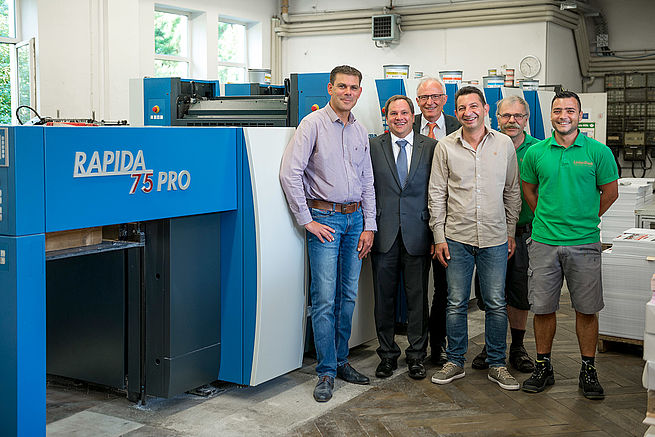
The printshop is bathed in light in the truest sense of the word, and is located conveniently between the local motorway junction and the warehouses of numerous logistics companies. Space is at an absolute premium, however, because LacherDruck continues to expand.
The business was founded by Heinrich Lacher in 1963. His son Gerhard handed the baton over to his longstanding staff colleagues Walter Demartin and Christian Bittner four years ago. Today, LacherDruck produces a broad spectrum of commercial and packaging jobs, mainly for the regional B2B market. Alongside, the portfolio includes various own products and a number of specialities such as sheet music.
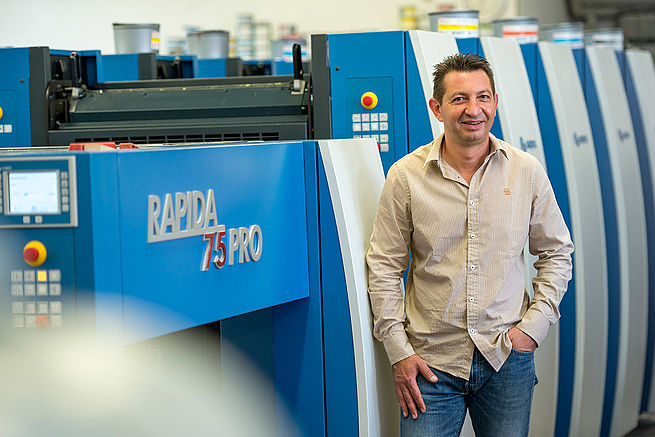
New technology to embrace changed market demands
LacherDruck used to print on a 12-year-old four-colour half-format press. Two years ago, however, the managing directors decided to invest in new technology in order to preserve their ability to offer customers print products of the highest quality and at the same time to facilitate further business development. Market changes, such as ever shorter run lengths, left no alternative to the purchase of a new sheetfed offset press.

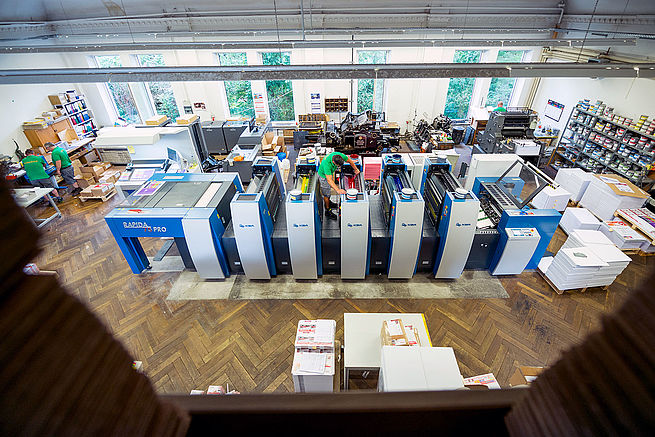
Compact and flexible
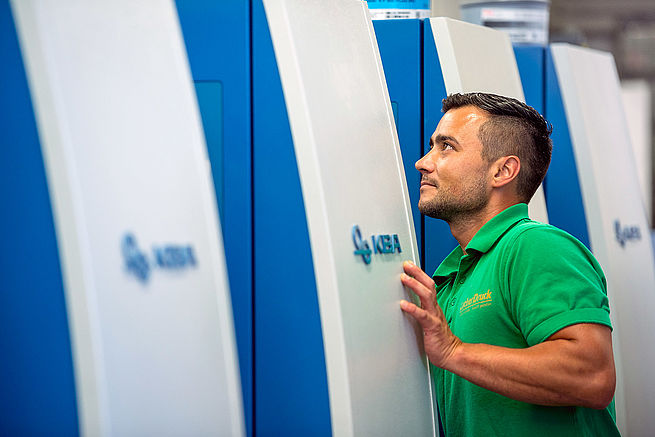
Print quality has improved significantly with the new press. The dot is clearer and more stable. Inking unit temperature control provides for constant process conditions and a high degree of stability over the length of a run. Makeready times are considerably shorter and washing results are flawless. Thanks to its CIP3 interface, the Rapida 75 PRO comes into colour – and thus production – much faster. As a result, smaller jobs can be handled much more efficiently. After all, up to 2,500 jobs with average run lengths between 500 and 5,000 sheets are printed every year.
The printers really enjoy working with the new press. One example: The disengaging of unused inking unit is really appreciated. “It makes our work so much easier,” says Walter Demartin. On other sheetfed offset presses, the rollers continue to run and have to be protected by applying oil. And when the inking unit is needed again, it first has to be washed down. That is all different with the Rapidas. Here, the unused inking unit is mechanically disconnected from the press drive and simply left standing still for the time being if it is not required for a particular job.
For approx. 40 per cent of all jobs, the fifth inking unit is used to apply a protective coating. Otherwise, it is available for the printing of spot colours. That, too, makes the press more flexible than a straightforward four-colour model.
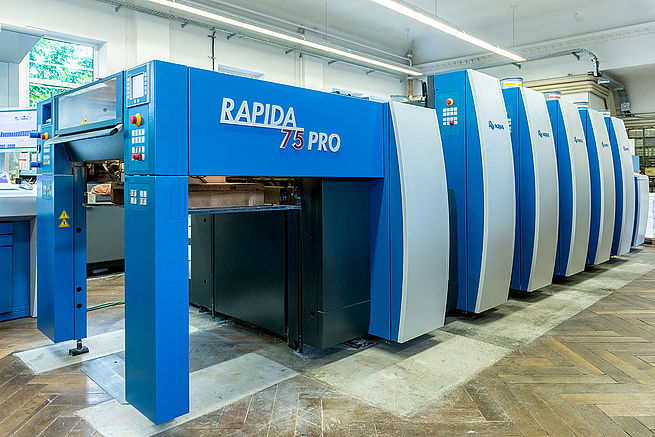
Consumables recommendations well received
The printers were equally happy with the consumables starter kit supplied with the Rapida 75 PRO. Many of the included PressConsum products are still in use – from washing solvents to blankets. The same applies to the inks recommended by KBA. LacherDruck today uses only the Novavit F950 Plus Bio series from Flint Group. The standard scale colours are produced at the K+E works in Stuttgart, which is barely 150 km from the printshop in Memmingen.
With its Agfa pre-press systems, further single-colour and digital presses, folding machinery, cylinder die-cutting and a booklet stitching line, LacherDruck is equipped to provide a full range of services. Some 80 per cent of the value creation chain is handled in-house.
Now that the Rapida 75 PRO has established additional production capacity, the next step is to strengthen the market position of LacherDruck’s own print products. To this end, the company is planning to invest heavily in training. Sooner or later, an answer must also be found to the location question. After all, the current building is already bursting at the seams.
